In a Nutshell
The new-era Colt Python is a superbly balanced revolver that oozes as much style and good looks as the snake guns of old. However, its simplified and redesigned trigger leaves some to be desired considering the price tag.
Colt Python Pros & Cons
Pros
- Gorgeous aesthetics
- Excellent balance
- Pleasant recoil impulse
Cons
- Mediocre trigger
- Required point of aim is low
Few gun companies in the world have as much name recognition and lasting influence as Colt does.
Guns like the Single Action Army and the 1911 helped define firearms design for decades to come. Among their iconic lineup is the ever-popular Python revolver.
Colt announced the re-introduction of the coveted blued Python at SHOT Show in 2024. All it took was one look, and we made the call to get our hands on one for testing.
If you want to see how it stacks up in today’s market, keep reading!
Table of Contents
Loading…
Prices accurate at time of writing
Prices accurate at time of writing
-
25% off all OAKLEY products - OAKLEY25
Copied! Visit Merchant
How We Tested the Colt Python
For this review, we ran 500 rounds through this revolver — 250 rounds of Magtech 158 grain FMJ .38 Special and 250 rounds of S&B 158 gr FMJ .357 Magnum. Accuracy testing was conducted at distances between 7 and 25 yards.
We also measured the trigger using a Dvorak TriggerScan machine to get a precise trigger pull measurement.
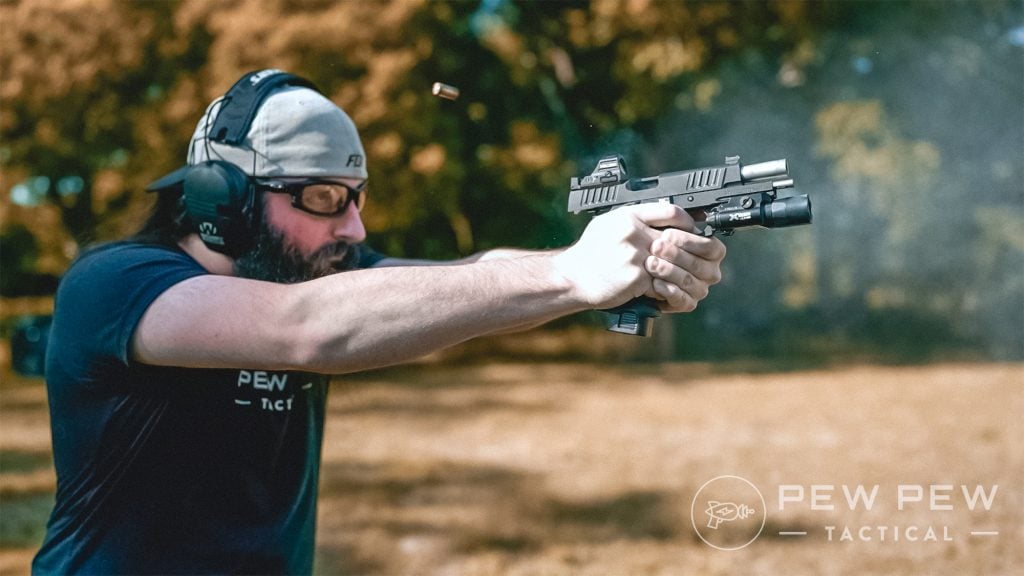
Testing these guns was Wyatt Sloan, an avid shooter and firearm collector. He has over 230 firearms (numerous revolvers included), and his experience includes over 20 years of hunting, a decade of competition, certified instructing, and plenty of time concealed carrying.
Colt Python Blued 6″ Specs & Features
Specs
- Caliber: .357 Magnum
- Action: Double-action
- Capacity: 6 rounds
- Barrel length: 6″
- Overall length: 11.5″
- Width: 1.55″
- Height: 5.5″
- Weight: 46 oz
Features
- Walnut grips with Colt medallion
- Vent rib barrel with full underlug
- Fully adjustable rear sight, red ramped front sight
Background
With Samuel Colt’s original patents dating back to 1835 and the company itself being founded in 1855, the history behind Colt is long and storied.
Colt set out to make a premium .357 Magnum revolver, which led to the release of the Python in 1955. These revolvers were in production until their discontinuation in 2005.
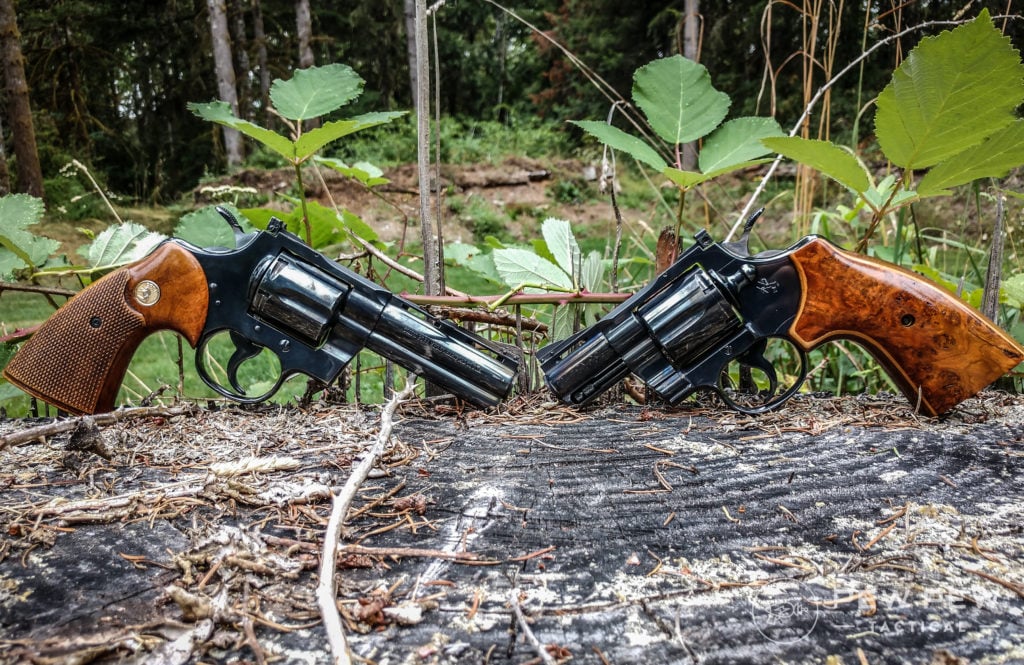
However, due to the Python’s popularity in both media and the gun community, the gun was redesigned and reintroduced in 2020 to meet consumer demand.
Who Is It For?
To put it plainly, the Python is for those who are looking for a drop-dead gorgeous revolver with a name and reputation to match.
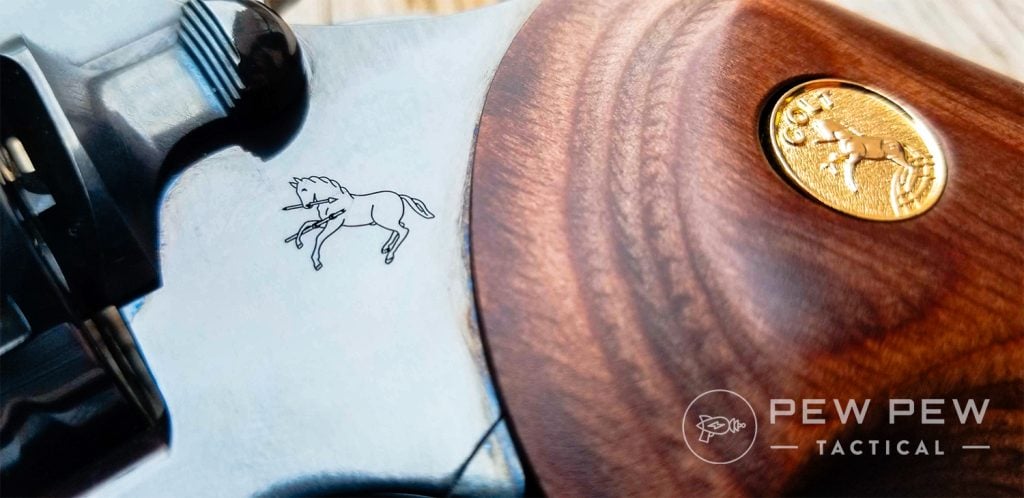
While these revolvers can certainly be flexed into defensive or woods carry roles, they better fill the roles of range guns, conversational pieces, collector’s items, or BBQ guns.
Ergonomics: Fit & Feel
The first thing you notice when you pick up a Python is how awesome these guns feel in the hand.
Colt offers the blued Pythons in 4.25-inch and 6-inch barrel lengths. I opted for the classic 6-inch, which provides an excellent sight radius while offering superb heft and balance —this is how revolvers should feel in the hand.
While the bluing isn’t quite as deep and lustrous as the Pythons of old, it still looks outstanding and is evenly applied with good depth.
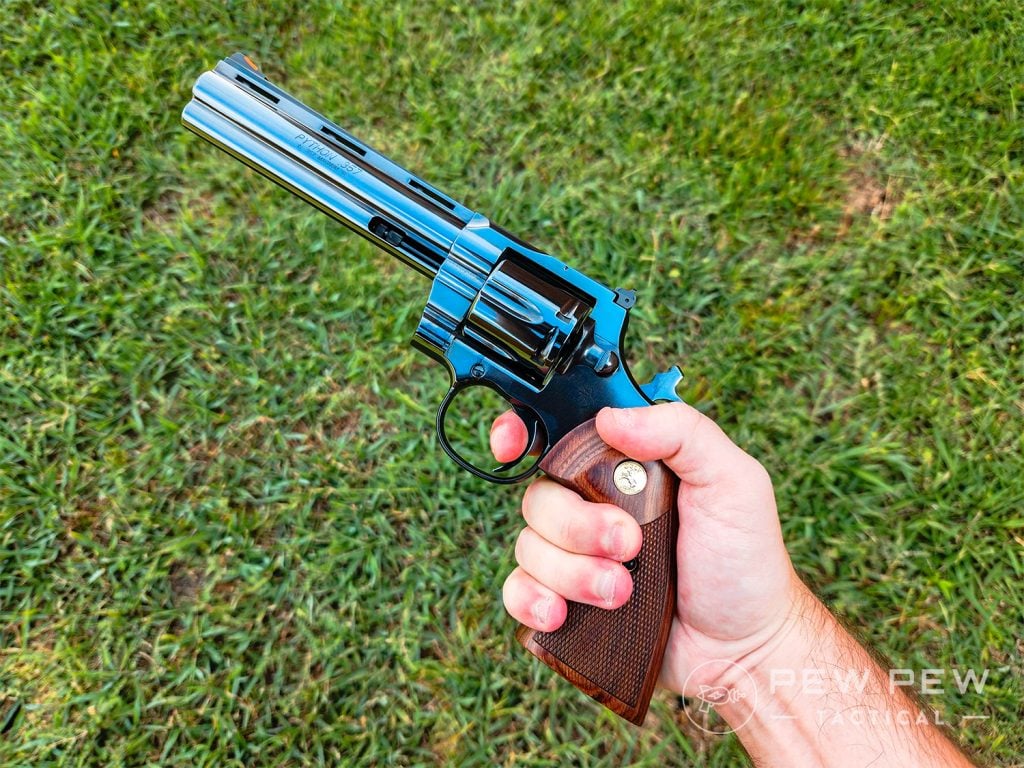
The classic-style checkered walnut grips with the Colt medallion are nice. These are both functional and look great. I found them neither too big nor too small for my medium-sized hands.
Cylinder lockup feels good, as do the internal mechanics when actuating the hammer and trigger. Whereas some revolvers feel finicky, the Python is solid from tip to butt.
A nice fully adjustable rear sight adorns the back, with an easy-to-see red-ramped front sight up front. The trigger is serrated but hardly radiused on the edges, which may cause discomfort to some (more on this later).
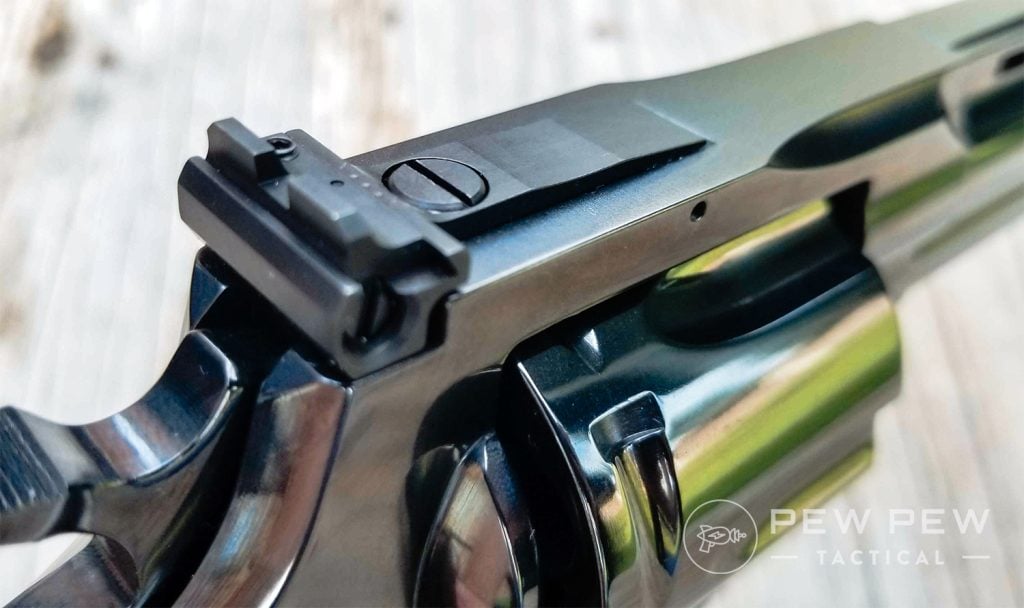
How Does It Shoot?
As mentioned earlier, the heft and balance of the 6-inch version are excellent. This means shooting .38 Special is ultra-pleasant. While the .357 Magnum is definitely stouter, the gun manages it well, and it was never uncomfortable in the recoil department.
The mechanical accuracy of the Python was good, and it was on par with guns like my Ruger GP100 and a hair behind my Smith & Wesson 686 — no complaints about the groupings at all.
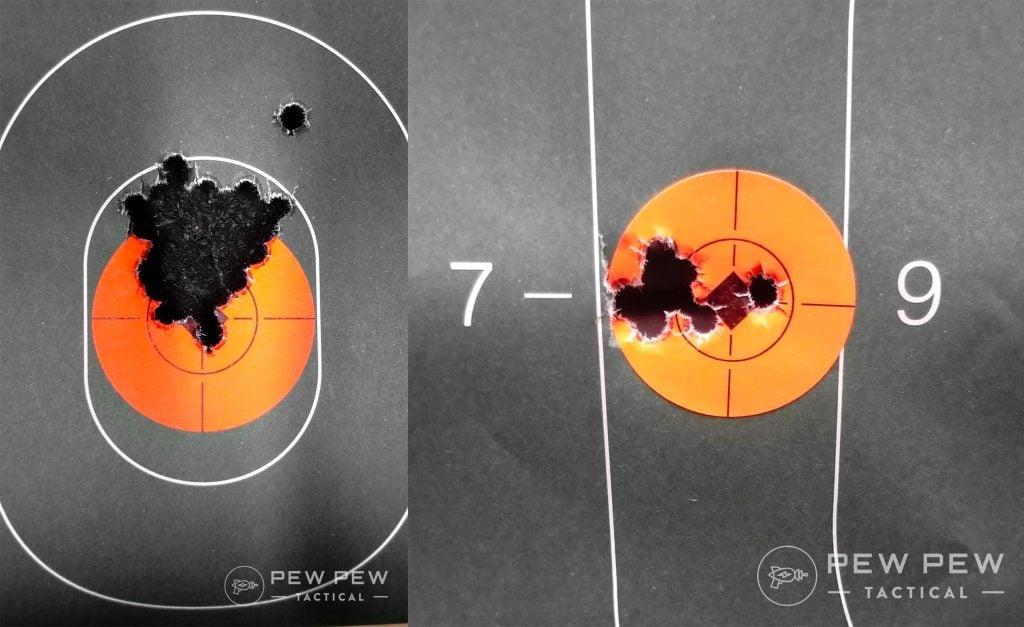
Reliability was also 100%, as you’d come to expect from a high-quality revolver.
However, this is where things start to come apart for me a little bit.
For starters, this gun prints high. Even with the rear sight bottomed out, I had to use a very healthy six o’clock hold to hit where I wanted to at seven yards with .38 Special. To hit the center of the X-ring on a standard B-27, I was holding closer to the bottom of the 10-ring.
The S&B .357 Magnum printed much closer to the point of aim but was still slightly high at 7 yards. As I moved the targets out to 10, 15 yards, and beyond, it became more noticeable.
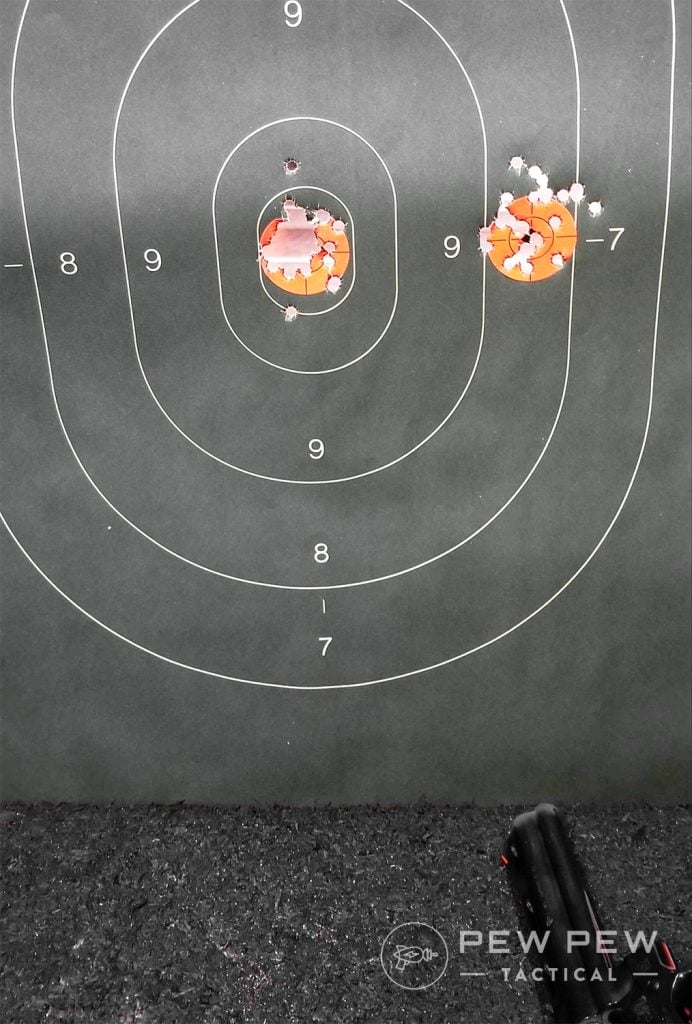
Colt completely redesigned and simplified the trigger system for the 2020 Python, greatly reducing the complexity and number of moving parts. They don’t outright advertise a trigger pull weight, but they do say it should fall between a certain range.
This means that each Python may vary by a not-insignificant amount in how the trigger feels. I put the gun on a Dvorak TriggerScan machine to get an advanced data readout on the trigger pull. The graphs below show a single-action pull of 5.8 lbs and a double-action pull of 9.4 lbs.
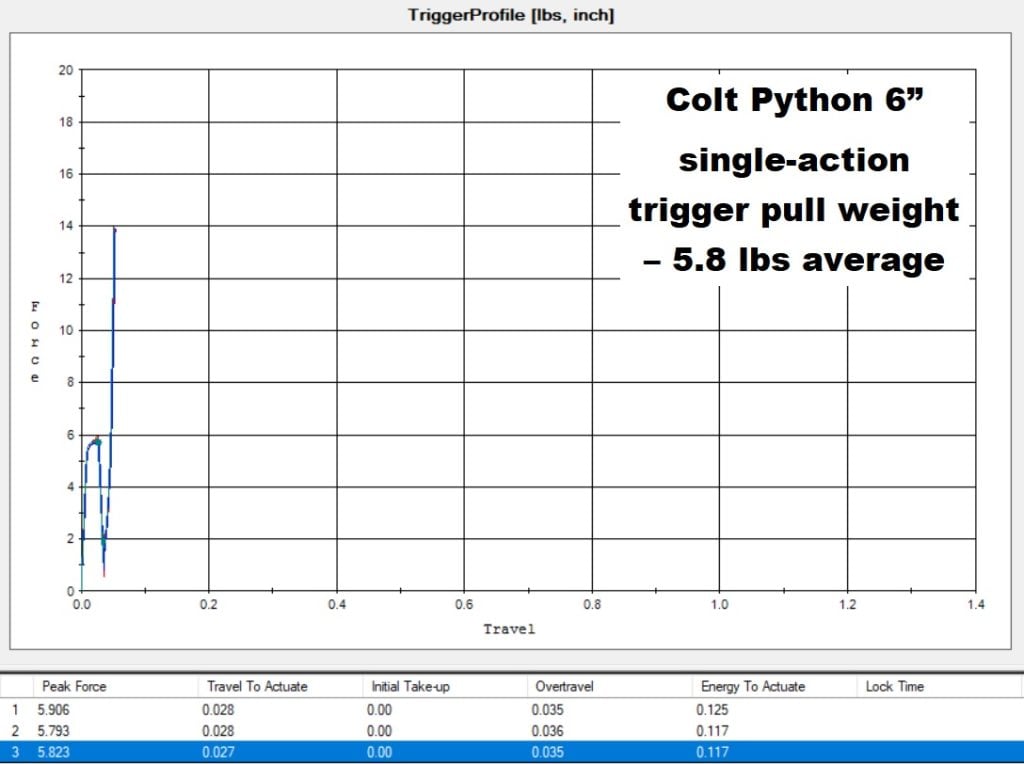
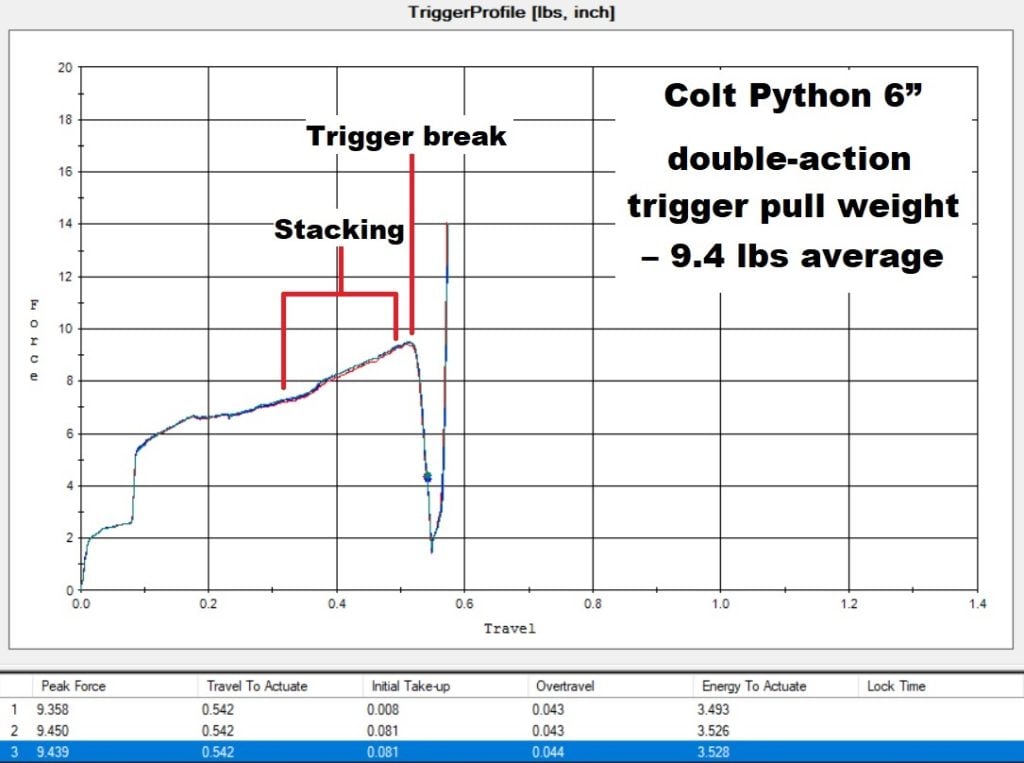
Here is the readout from a bone-stock Smith & Wesson Model 14 for comparison.
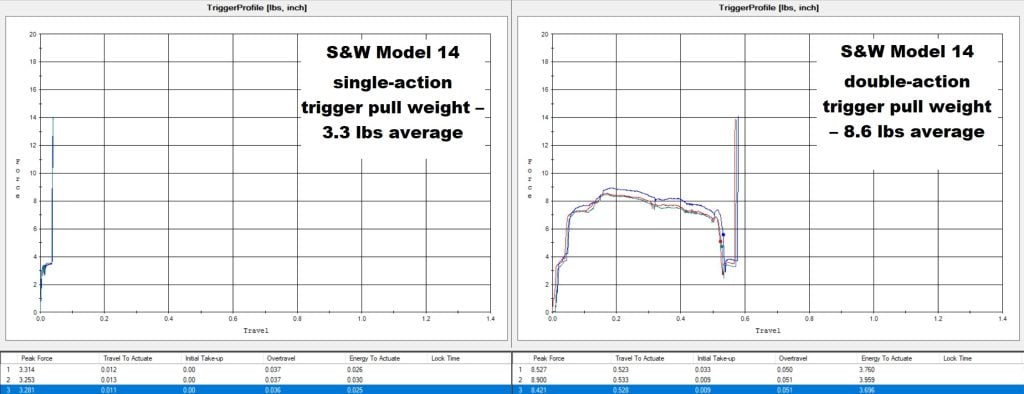
I would describe the trigger pull on this particular Python as consistent but “average.” This is not your father’s hand-tuned Python trigger.
There is also some stacking near the end of the trigger pull, as you can see on the graph. That stacking, combined with the very square edge of the trigger, actually ended up giving me some discomfort on my trigger finger after longer strings of shooting. A radiused or wider trigger would do wonders here
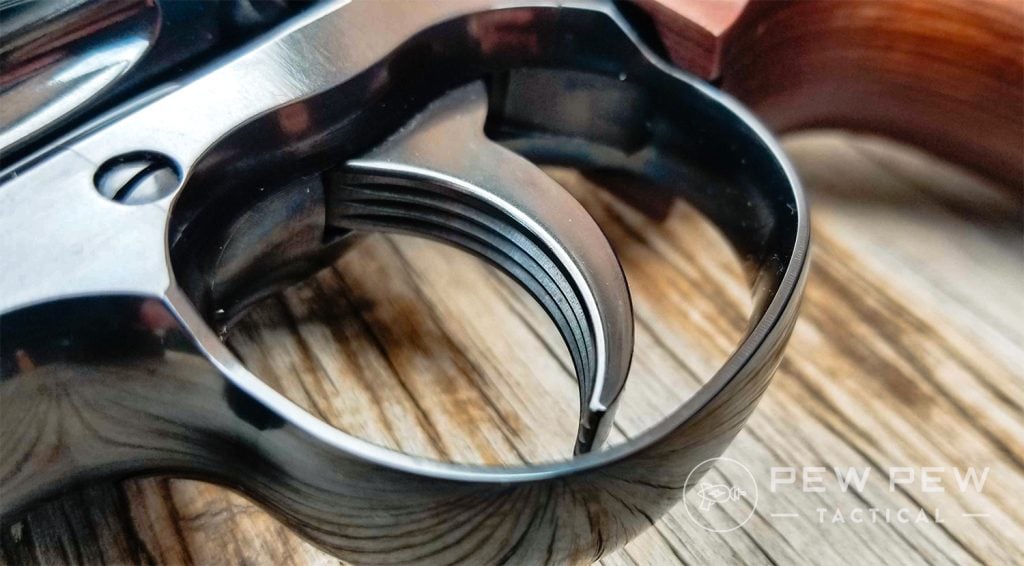
I also noted that two of the chambers seemed to be a little more reluctant to eject spent casings, but they did start to loosen up as testing went on.
All-in-all, the recoil impulse and accuracy are great, but an average trigger and required six o’clock hold mean it takes notably more concentration to shoot this gun as well as my other revolvers.
Why Is the Colt Python Unique?
Jeff Cooper said the Python was the finest revolver ever made. It has been in the hands of numerous fictional characters such as Rick Grimes, Gordon Freeman, Tommy Vercetti, and many more due to its sheer screen presence.

It feels good, looks good, and prints well — an attractive combination for an attractive gun. Sure, there may be better value revolvers out there, but its distinctive vent-rib barrel and iconic prancing pony logo beat everything out in cool factor.
By the Numbers
Accuracy: 4/5
Mechanical accuracy on the Python was solid and repeatable. Practical accuracy is somewhat hindered by the trigger and sights.
Reliability: 4.5/5
Every round went bang, and there were zero timing or lockup issues. I deducted half a point here because two of the chambers were hard to eject the brass from.
Customization: 3.5/5
Various grips and sights are available. Some Picatinny rail adapters are also on the market. However, it is still a revolver at the end of the day and needs very little in the way of modification.
Ergonomics: 4/5
The gun is extremely well balanced and the cylinder release is easy to actuate. The grips are comfortable, but the trigger is far too uncomfortable for me.
Value: 3.5/5
A street price of around $1,400-1,600 makes the Python harder to justify over competing guns like the S&W 586 at $900. That being said, many who want a Python want a Python only – nothing else.
Overall: 3.5/5
Prices accurate at time of writing
Prices accurate at time of writing
-
25% off all OAKLEY products - OAKLEY25
Copied! Visit Merchant
Accessories for the Colt Python
Speedloaders are a must-have if you plan on a longer shooting session. Loading rounds one by one is cool for all of about two times before it gets tedious.
Prices accurate at time of writing
Prices accurate at time of writing
-
25% off all OAKLEY products - OAKLEY25
Copied! Visit Merchant
Whether you want to feel like the main character in a TV show or just show off your gun at the BBQ, a leather holster is the way to go for these beauties.
Prices accurate at time of writing
Prices accurate at time of writing
-
25% off all OAKLEY products - OAKLEY25
Copied! Visit Merchant
Electronic ear-pro will save you from the blast of .357 Magnum while also letting you talk to anyone who is coming up to ask about your Python (trust me, it will happen).
Prices accurate at time of writing
Prices accurate at time of writing
-
25% off all OAKLEY products - OAKLEY25
Copied! Visit Merchant
Final Verdict
From a pure shooting perspective, the Python isn’t quite the revolver for me. Minor tweaks to the trigger geometry and the sight height would catapult this gun into must-have territory.
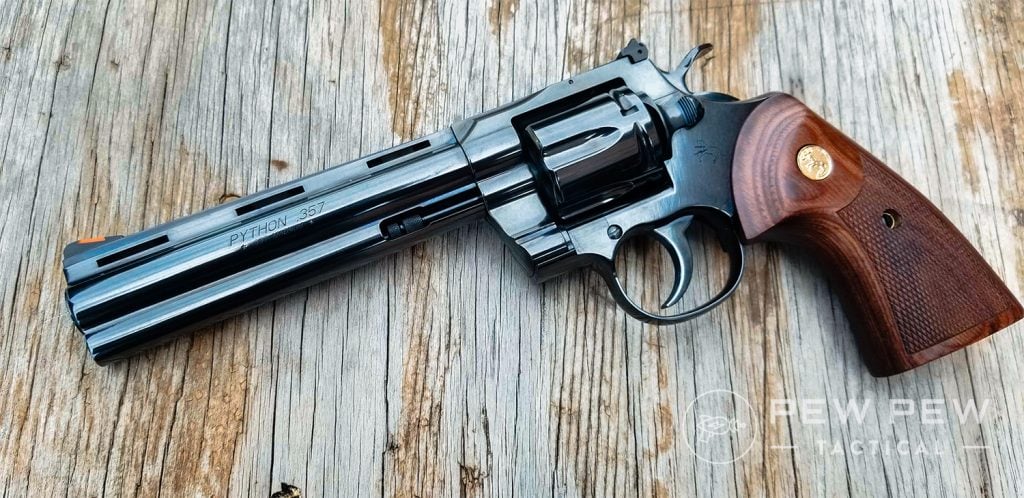
However, it is still a solid shooter and has such a vibe that I seriously contemplated for a good two or three weeks whether I should purchase it or not. I can’t help but want to hold it and look at it anytime it is near, and for many people, that is what the Python is truly about.
What are your thoughts on the new Python? Let us know in the comments below! Interested in wheel guns in general? Check out our article on the Best .357 Magnum Revolvers!

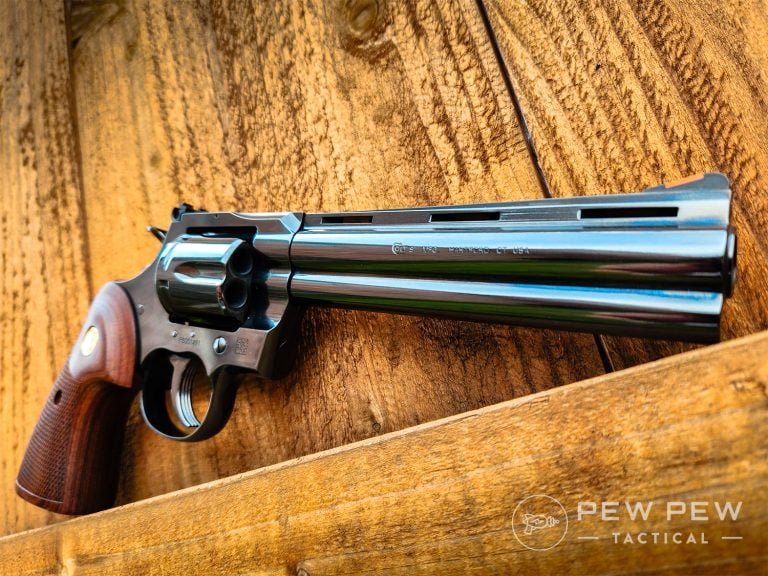
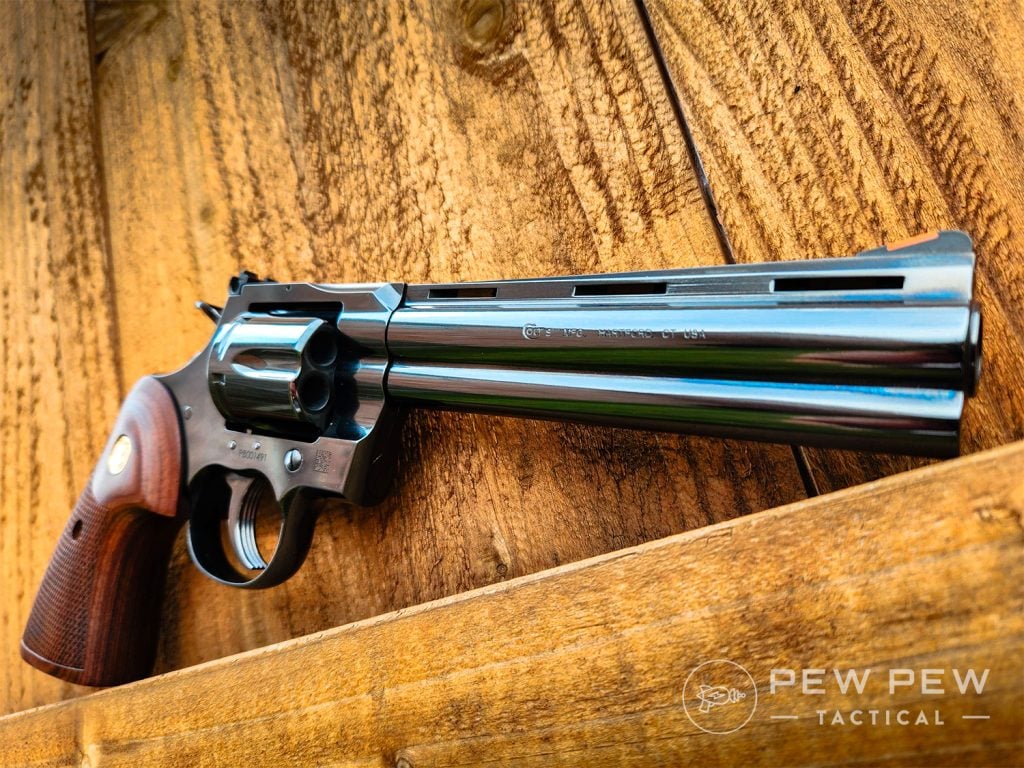











10 Leave a Reply
I had an 8” python and sold it with a Bianchi shoulder holster I paid $500 for it new without holster. Sold it durning hard times after divorce. I would buy the new one in 8” in a heart beat even tho it’s the new version and it will never be as beautiful as my old one in the Colt Royal Blue absolutely beautiful ! ! !
I will never buy the 4" blued version, or any 8" version with those extra vent cuts. What is CZ/Colt thinking? It looks like a Rossi knockoff and totally out of place. 2 vents cuts on the 4" stainless steel version, but 3 on the blued version????????????
I've wanted one since I was a kid back in the 70s. Saw a new 6" at a sporting goods store and wife let me buy it! 1500$ (ouch)! To me, it's not just a handgun, it's a work of art! The DA pull is like silk. The SA break is a tad heavier than my 629, I hope that will improve with use. As with all Pythons, it is an heirloom that can be passed down for many generations.
Besides how good these guns look the one thing they never should have toyed with was the trigger. I have an original Python in 4", at the time I bought it the 6" models were very difficult to find. Screwing around with the trigger is a deal breaker for me no matter how much I want a 6". I'll bite the bullet and keep looking at gun shows until I find an original 6" even though it will cost between $2000 ~ $2500 if you can get the owner to part with it.
Brent, it is a tough call on the trigger. A properly tuned old Python trigger is really nice, but they just had so many parts with a good amount of hand-fitting required. I definitely understand their process of trying to reduce the amount of moving parts to make for a more reliable and easy-to-maintenance system. I've spoken to a few people with newer Pythons who have some with pretty solid triggers, so I reckon a Wolff spring or two in the right place would shore that up somewhat. Those old ones are still super nice though, good luck on your hunt for one!
I bought the anaconda and what you wrote here i don't know about with the python .. But the 44 mag in ss is sooo smooth it is not funny the break is like glass I thought my Ruger sp100 was smooth compared to a S&W but i have no need for the python my Ruger in 357 does the trick
Lawrence, the older Anacondas weren't as nice as the older hand-fitted Pythons. Many people, myself included, find the newer Anaconda to be nicer than the old ones - I am glad you enjoy yours. Between Ruger, S&W, and Colt, I feel like much of it comes down to personal preference in the end anyway.
The Pythons always excelled in looks, but there was always a “but”. In the old days, it was the timing. I guess now it’s the trigger and sight regulation. I will stick with the S&W 586.
I have a 686 with 6 inch barrel and a factory comp cut on the barrel (a rectangular port)
It shoots so nice. Right on target with either 357 HOT loads or 38 Specials.
whats not to like. Mine is a dash-5. Trigger pull seems high but if you learn to stage the trigger it prints right where you want it.
The new Python is a nice gun, and I think some minor tweaks could put it right up there with some of my old standby revolvers. It is hard to go wrong with an L-Frame for sure, though.